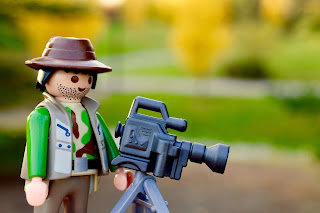Filmmaking transcends traditional subject boundaries, offering a dynamic, multi-faceted approach to education. By integrating Science, Technology, Engineering, Arts, and Mathematics (STEAM) principles, filmmaking empowers learners with 21st-century skills crucial for success in a rapidly evolving world:
- Collaboration & Communication: Team-based projects foster essential communication, collaboration, and leadership skills.
- Creativity & Imagination: Filmmaking cultivates imaginative storytelling, visual expression, and innovative problem-solving.
- Critical Thinking & Problem-Solving: Learners develop critical thinking, analytical, and problem-solving abilities through scriptwriting, storyboarding, and technical challenges.
Addressing Educational Needs Through Filmmaking
- Personalized Learning: Filmmaking caters to diverse learning styles, offering a hands-on, experiential approach that engages visual, auditory, and kinesthetic learners.
- Accessibility & Inclusivity: Filmmaking can overcome language barriers and cultural divides, providing a universal language for communication and expression.
- Empowering Disadvantaged Communities: Filmmaking can empower learners in underserved communities by providing a platform for their voices to be heard and their stories to be shared.
Implementing Filmmaking in the Classroom
- Establishing Film Clubs: Creating film clubs in schools, orphanages, and special needs centers provides a structured environment for learning and creative expression.
- Integrating Filmmaking Across Curriculum: Filmmaking can be seamlessly integrated across subjects, from science experiments to historical documentaries, enhancing learning and engagement.
- Utilizing EdTech Tools: Incorporating digital technologies like cameras, video editing software, and online platforms fosters digital literacy and 21st-century skills.
STEAM in Action: Filmmaking as a Learning Laboratory
- Science: Understanding physics of motion, optics, acoustics, and human psychology are integral to filmmaking.
- Technology: Learners gain proficiency in using cameras, editing software, and other digital tools, developing essential technology skills.
- Engineering: From designing sets and special effects to problem-solving technical challenges, filmmaking fosters engineering design thinking and problem-solving skills.
- Arts: Storytelling, scriptwriting, acting, cinematography, and music composition provide avenues for artistic expression and creative exploration.
- Mathematics: Filmmaking involves mathematical concepts like timing, framing, budgeting, and spatial relationships.
Conclusion
By embracing filmmaking as a STEAM-powered educational approach, Nigeria can cultivate a generation of creative, innovative, and globally-minded learners. Filmmaking not only equips students with valuable skills but also provides a powerful platform for self-expression, social impact, and lifelong learning.
Key EdTech Considerations:
- Accessibility to Technology: Ensuring equitable access to technology, including cameras, computers, and high-speed internet, is crucial for successful implementation.
- Teacher Training: Providing teachers with professional development opportunities in filmmaking pedagogy and technology integration is essential.
- Curriculum Development: Developing a comprehensive curriculum that integrates filmmaking across subjects and aligns with national education standards is vital.
By embracing these considerations, Nigeria can leverage the power of filmmaking to transform education and empower the next generation of innovators and leaders.
Note: This rewritten version focuses on:
- Clearer and more concise language: Using more direct and impactful language.
- EdTech focus: Highlighting the role of technology and its integration.
- 21st-century skills: Emphasizing the development of critical 21st-century skills.
- Educational impact: Focusing on the broader educational benefits of filmmaking.


Comments
Post a Comment